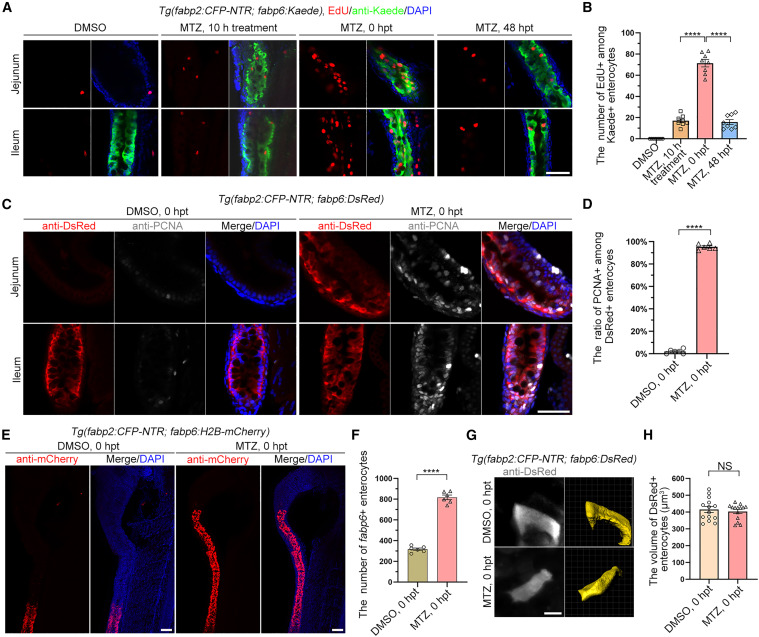Fig. 2 Ileal enterocytes proliferate after jejunal damage (A) In the uninjured control, the ileal enterocytes rarely underwent mitosis. By contrast, with MTZ treatment from 10 h to 0 hpt, the EdU+ enterocytes gradually increased and then decreased at 48 hpt. (B) Graph showing quantification of EdU+ cells among Kaede+ enterocytes (n = 8). Data are presented as mean ± SEM. ∗∗∗∗p < 0.0001, two-tailed unpaired t test. (C) In contrast to uninjured intestine, the fabp6+ enterocytes of injured intestine highly expressed PCNA at 0 hpt. (D) Graph showing quantification of ratio of PCNA+ among DsRed+ enterocytes (n = 6). Data are presented as mean ± SEM. ∗∗∗∗p < 0.0001, two-tailed unpaired t test. (E) Compared with DMSO treatment, fabp6+ enterocytes increased cell number after intestinal injury. (F) Graph showing quantification of number of fabp6+ enterocytes (n = 6). Data are presented as mean ± SEM. ∗∗∗∗p < 0.0001, two-tailed unpaired t test. (G) Cell size of fabp6+ enterocytes during MTZ treatment. (H) Graph showing quantification of volume of fabp6+ enterocytes (n = 14). Data are presented as mean ± SEM. Not significant (NS), two-tailed unpaired t test. Scale bars, 5 μm (G) and 50 μm (A, C, and E)
Image
Figure Caption
Acknowledgments
This image is the copyrighted work of the attributed author or publisher, and
ZFIN has permission only to display this image to its users.
Additional permissions should be obtained from the applicable author or publisher of the image.
Full text @ Cell Rep.

